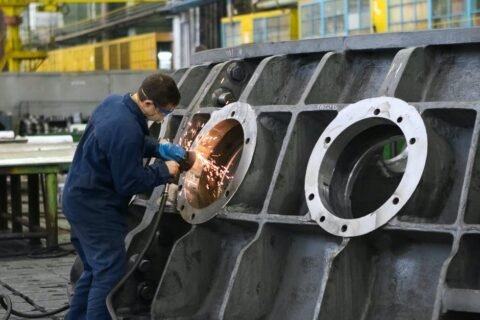Animation is a captivating field that blends art, storytelling, and technology. Professional animators work behind the scenes to create the magical worlds and characters we see in films, television shows, video games, and advertisements. This post takes a closer look at a day in the life of professional animators, highlighting their processes, challenges, and the skills they bring to their craft. We will also explore the roles of Australian animation studios and the intricacies of animation video production.
The Role of Animators in the Creative Process
Animators play a crucial role in storytelling, bringing characters and scenes to life through movement and expression. They work closely with directors, writers, and other artists to ensure the final product aligns with the creative vision. Whether working in a large animation studio or as freelancers, animators must combine their artistic skills with technical proficiency to create engaging and believable animations.
A Typical Day for a Professional Animator
A professional animator’s day is filled with various tasks, from planning and storyboarding to production and review. Here is a breakdown of a typical animator’s day.
Morning: Planning and Storyboarding
The day often begins with planning and storyboarding. Animators review the script and develop storyboards that outline the sequence of events in the animation. Storyboarding is a critical step that helps visualise the story and ensures everyone on the team is on the same page. This process involves sketching out essential scenes and transitions, which serve as a blueprint for the animation video production process.
Midday: Animation and Production Work
Midday is typically dedicated to animation and production work. Using various software tools, animators create characters’ movements and expressions, paying close attention to timing and fluidity. In an Australian animation studio, animators might work on different aspects of the project, such as character animation, background design, or special effects. This phase requires high concentration and precision, as animators bring the storyboard to life frame by frame.
Afternoon: Review and Feedback
In the afternoon, animators usually participate in review sessions where directors or lead animators critique their work. Feedback is an essential part of the animation process, helping to refine and improve the animation. Based on this feedback, animators may need to adjust, ensuring that the final product meets the project’s standards and vision. This iterative review and revision process is crucial for maintaining the quality of the animation.
The Tools of the Trade
Professional animators rely on various tools and software to create their work. Some of the most commonly used tools include:
- Adobe Animate: A popular tool for 2D animation, offering a range of features for creating vector animations.
- Toon Boom Harmony: Another 2D animation software known for its robust features and professional-grade capabilities.
- Autodesk Maya: A leading software for 3D animation, widely used in film and video game production.
- Blender: An open-source 3D animation tool offering a comprehensive suite of modelling, rendering, and animation features.
These tools enable animators to create detailed and dynamic animations, from simple 2D sequences to complex 3D environments.
The Collaborative Nature of Animation Studios
Animation is inherently a collaborative process. In a studio setting, animators work alongside a diverse team of professionals, including writers, directors, voice actors, and sound designers. Collaboration is essential to ensure that all animation elements come together seamlessly. An Australian animation studio, for example, might have teams specialising in different areas of animation, such as character design, storyboarding, and post-production. Effective communication and teamwork are critical to the success of any animation project.
Challenges Faced by Professional Animators
While animation is a rewarding career, it also comes with its challenges. Some common challenges faced by professional animators include:
- Tight Deadlines: Animation projects often have strict deadlines, requiring animators to work efficiently and manage their time effectively.
- Technical Issues: Animators must stay updated with the latest software and tools, and technical glitches can sometimes disrupt the workflow.
- Creative Blocks: Like any creative profession, animators can experience periods of creative block where inspiration is hard to find.
- Feedback and Revisions: Animation’s iterative nature means that animators often need to make multiple revisions based on feedback, which can be time-consuming.
Despite these challenges, the satisfaction of seeing their creations come to life keeps animators motivated and passionate about their work.
The Impact of Australian Animation Studios
Australian animation studios have made significant contributions to the global animation industry. Known for their creativity and innovation, these studios have produced award-winning films, television shows, and advertisements. The collaborative environment in these studios fosters creativity and excellence, allowing animators to push the boundaries of what is possible in animation.
An Australian animation studio typically offers various services, from pre-production to post-production. These studios are equipped with state-of-the-art technology and staffed by talented professionals passionate about their craft. Whether working on a feature film or a short commercial, Australian animation studio are known for their high-quality work and dedication to storytelling.
Conclusion
A professional animator’s day is filled with creativity, collaboration, and technical skill. From storyboarding and planning in the morning to animation and production work in the afternoon, animators play a vital role in bringing stories to life. The tools and software they use, combined with their artistic talent and dedication, enable them to create captivating animations that resonate with audiences.
In animation video production, the collaborative efforts of animators, directors, and other creative professionals are essential. Australian animation studios, in particular, have established themselves as leaders in the industry, known for their innovation and high-quality productions.
As you can see, professional animators are the unsung heroes behind the scenes, working tirelessly to create the animated content we all love. Their passion and expertise continue to drive the industry forward, ensuring that animation remains an influential and beloved form of storytelling.





